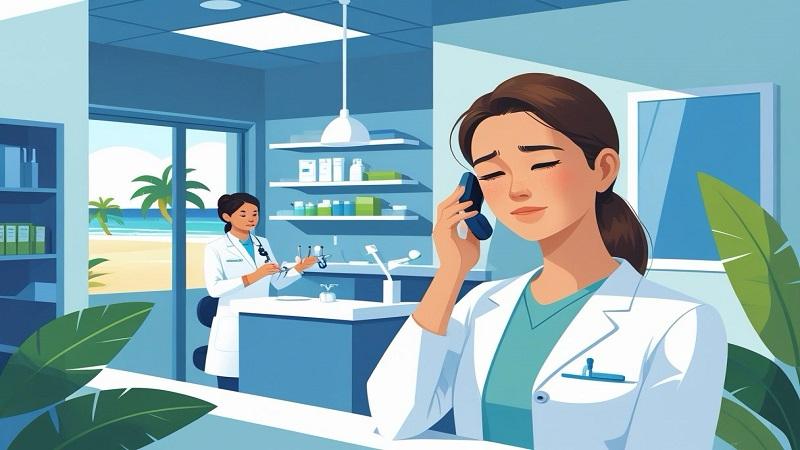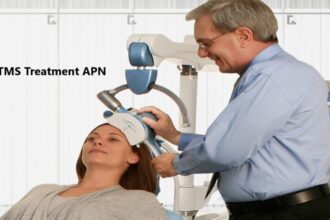Dental emergencies can strike without warning, leaving people uncertain about whether their situation requires immediate professional attention. Many dental issues feel urgent but don’t actually need emergency care, while others demand swift action to prevent permanent damage or complications.
A true dental emergency typically involves unbearable pain, severe infection, uncontrolled bleeding, or trauma that threatens a tooth’s survival. Understanding these distinctions helps patients make informed decisions about their care and avoid unnecessary stress during already difficult situations.
Knowing when to seek emergency dental care and what steps to take beforehand can make the difference between saving and losing a tooth. This quick checklist will help residents identify genuine dental emergencies and prepare effectively before contacting an emergency dentist in their area.
Dental Emergencies Requiring Immediate Action in Vero Beach
Certain dental conditions require immediate professional attention to prevent permanent damage and relieve severe pain. These situations include severe toothache, broken teeth, knocked out permanent teeth, dental abscesses, and lost dental restorations.
Severe Toothache and Persistent Tooth Pain
Severe toothache represents one of the most common dental emergencies requiring immediate attention. This type of tooth pain typically indicates underlying infection, nerve damage, or advanced decay.
Pain that prevents normal activities like eating, sleeping, or concentrating demands emergency dental care. Throbbing pain that worsens when lying down often signals serious infection.
Signs requiring immediate action:
- Pain rated 7-10 on a pain scale
- Swelling around the affected tooth
- Fever accompanying dental pain
- Pain that radiates to the jaw, ear, or neck
Patients should avoid placing aspirin directly on the gum tissue, as this can cause chemical burns. Cold compresses applied to the outside of the cheek can provide temporary relief until professional treatment is available.
Broken, Cracked, or Chipped Tooth
A broken tooth, cracked tooth, or chipped tooth requires immediate evaluation to prevent further damage. The urgency depends on the extent of the damage and associated pain levels.
Immediate action needed when:
- Sharp edges cut the tongue or cheek
- Significant pain occurs when biting
- The crack extends below the gum line
- Pulp exposure is visible
Minor chips without pain may wait for regular office hours. However, any tooth fracture with bleeding or severe pain constitutes a dental emergency.
Patients should rinse with warm water and save any tooth fragments. Covering sharp edges with dental wax or sugarless gum prevents soft tissue injury.
Knocked Out Permanent Tooth
A knocked out permanent tooth represents a true dental emergency with time-sensitive treatment requirements. Success rates for reimplantation decrease significantly after the first hour.
Critical steps for tooth preservation:
- Handle the tooth by the crown only
- Rinse gently with milk or saline
- Attempt gentle reinsertion if possible
- Store in milk, saliva, or saline solution
Emergency dental care should be sought within 30 minutes for optimal outcomes. The tooth should never be scrubbed or stored in water.
Adult permanent teeth have much better reimplantation success rates than primary teeth. Quick action and proper handling make the difference between saving and losing the tooth permanently.
Dental Abscess and Gum Infections
Dental abscess and severe gum infections can spread rapidly and become life-threatening without prompt treatment. These conditions require immediate professional intervention.
Warning signs include:
- Facial swelling extending to the neck
- Difficulty swallowing or breathing
- High fever with dental pain
- Pus discharge from gums
Abscessed teeth create pockets of infection that can enter the bloodstream. Patients with compromised immune systems face particularly high risks from untreated dental infections.
Salt water rinses may provide temporary comfort, but professional drainage and antibiotic therapy are essential. Delaying treatment can result in hospitalization for severe systemic infections.
Lost Filling or Broken Dental Restoration
A lost filling or broken dental restoration exposes sensitive tooth structure and creates potential for further damage. While not always painful initially, these situations require prompt attention.
Immediate concerns include:
- Sharp edges cutting soft tissues
- Food debris collecting in exposed areas
- Increased sensitivity to temperature
- Risk of further tooth fracture
Temporary dental cement from pharmacies can provide short-term protection. Sugar-free gum may also cover rough edges temporarily.
The exposed tooth becomes vulnerable to bacteria and additional decay. Emergency dental care prevents complications that could require more extensive future treatment.
Essential Steps Before Calling an Emergency Dentist
Taking the right steps before contacting emergency dental care can help determine the urgency level and provide temporary relief. Knowing when to seek immediate professional help versus visiting an emergency room ensures patients receive appropriate treatment quickly.
Assessing the Urgency of Dental Issues
Severe pain that interferes with daily activities requires immediate emergency dental care. Patients should call right away if they experience throbbing, constant pain that doesn’t respond to over-the-counter medications.
Uncontrolled bleeding from the mouth, gums, or tooth socket indicates a serious issue. This typically occurs after tooth extraction complications or facial trauma.
A fractured tooth with exposed nerves causes intense pain and sensitivity. Patients can identify this when cold air or liquids create sharp, shooting pain.
Signs requiring immediate attention:
- Severe swelling affecting the face or neck
- Difficulty swallowing or breathing
- High fever accompanying dental pain
- Knocked-out permanent tooth
Less urgent situations include minor chips without pain, lost fillings without discomfort, or slight gum irritation. These issues can wait until regular office hours but still need professional evaluation within a few days.
What to Do If You Cannot Reach a Dentist Right Away
Pain management starts with over-the-counter medications. Patients can take ibuprofen for inflammation and acetaminophen for pain relief, following package directions carefully.
Cold compress application reduces swelling and numbs pain. Apply for 15-20 minutes at a time with a barrier between ice and skin.
For a broken denture, patients should avoid using adhesives or attempting repairs. Remove any loose pieces to prevent choking hazards.
Temporary measures include:
- Rinsing with warm salt water for minor irritation
- Using dental wax on sharp tooth edges
- Avoiding extremely hot or cold foods
- Sleeping with head elevated to reduce throbbing
Never use aspirin directly on gums as it can cause chemical burns. Avoid numbing gels containing benzocaine for extended periods.
When to Visit the Emergency Room Instead
Life-threatening symptoms require emergency room treatment rather than emergency dentistry. Severe facial swelling that restricts breathing or swallowing needs immediate medical attention.
Signs requiring hospital care:
- High fever (over 101°F) with facial swelling
- Difficulty opening mouth or swallowing
- Rapid spreading of infection
- Severe trauma affecting jaw or facial bones
Knocked-out teeth from car accidents or sports injuries may need emergency room evaluation first. Medical professionals can assess for concussion or other serious injuries.
Emergency rooms cannot perform tooth extraction or complex dental procedures. They focus on controlling infection, managing severe pain, and prescribing antibiotics when necessary.
Hospital staff will:
- Prescribe pain medications stronger than over-the-counter options
- Provide IV antibiotics for serious infections
- Treat facial fractures or jaw injuries
- Refer patients to emergency dental care for follow-up treatment
Patients should visit emergency rooms when dental issues accompany other medical symptoms or result from significant trauma.

















